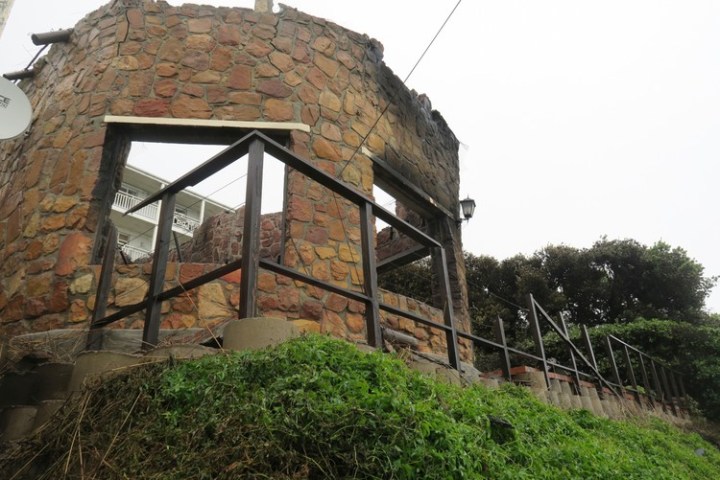INSURANCE CLAIMS
Managing weather damage: Insurers offer tips

Insurers issue tips on managing weather-related risks as Cape storms wreak havoc, with a surge in claims highlighting the growing vulnerability to climate change.
After an intense low cut-off system wreaked havoc in the Cape this weekend, with strong gale-force winds and rain damaging properties in the Cape Winelands, Overberg and throughout the rest of the Western Cape, insurers have issued tips on how you can manage weather-related risks.
The South African Insurance Association (Saia) has observed a notable surge in weather-related insurance claims among its member companies for both property and motor insurance, underscoring the growing vulnerability of individuals and communities to climate change risks.
The Western Cape is the most disaster-prone province in South Africa, and is particularly vulnerable to climate change and the effects of climate-related hazards because of its coastal location, with rising sea temperatures expected to influence regional weather patterns. According to the Western Cape government, at least R3.5-billion worth of infrastructure was destroyed in two major floods in June and September last year.
Tarina Vlok, managing director at Elite Risk Acceptances, a high-net-worth insurer and subsidiary of Old Mutual Insure, says it is impossible to estimate the quantum of losses from the storm this weekend at this stage given that the storm is still ongoing, but that it will no doubt run into “millions”.
She says heritage properties, from Cape Dutch houses in the Winelands that were built hundreds of years ago to special landmark sites, are especially at risk of weather-related events due to their age. The historic manor house at Blaauwklippen, one of the oldest wine farms in Stellenbosch, was gutted by a blaze on Sunday morning.
Rowland Ramalingam, Santam’s head of non-motor claims says the country’s largest short-term insurer has activated its catastrophe claims management protocols, which has seen the company deploy to affected areas to service policyholders and expedite the filing of claims. “From the claims filed by this morning, damage includes roofs blown off and trees falling on properties. Santam assessors on the ground have confirmed that most damage will be of high value due to the gale force winds,” he says.
“Reinstating a heritage property is often much more expensive and takes longer to complete than a modern building. This is because old materials need to breathe and move according to external forces like moisture and temperature change. All repairs need to respect the materials, and insurers and their service providers must ensure that the correct matching and traditional materials are used,” says Vlok.
King Price Insurance spokesperson Sakina Ntuli says it is important for consumers to know that comprehensive insurance for buildings, home contents and cars will cover valid claims for loss or damage caused by “acts of nature” like the storms over the past weekend.
“While successful weather-related insurance claims provide policyholders with the leverage to restore their financial position to that before they suffered a loss and/or damage to their insured assets, it’s crucial to make proactive improvements to your property to ensure it becomes a climate-resilient home,” said Themba Palagangwe, Saia’s general manager: governance and transformation.
Around the home
- Maintenance reduces risk: Johanni Jennings, head of marketing at Auto & General, advises that you check structures around your house for weak spots, clear debris from gutters, fasten items that could become deadly projectiles, cut away dead trees and branches and ensure adequate drainage.
- Forewarned is forearmed: Always keep an eye on the weather forecast and look out for warnings of heavy rains and high winds. Avoid danger areas where possible.
- Emergency numbers: Have all emergency numbers, including that of your insurer, saved on your phone or memorised. Make sure that your whole family is thoroughly briefed on what to do and who to call in an emergency.
- Alert: If you notice a possible safety hazard due to bad drainage, cracking structures, landslides etc., in a public area, alert the authorities immediately.
Heavy rain
- Secure loose items: Make sure that your outdoor furniture and accessories are safely stored or firmly secured.
- Lightning: Heavy rains are often associated with lightning. It’s best to have surge protection plugs in place and/or to unplug appliances before the storm arrives.
- Parking: Where possible, park your car under cover and delay travelling until the storm has subsided. If you are caught in a heavy storm and you feel it’s not safe to drive, look for cover, pull over and/or seek shelter. This could include a covered car park, a petrol station or under a bridge. Don’t park under trees as there is a danger of falling branches and debris. Take extreme care when pulling over, put on your hazard lights, and don’t risk your safety or the safety of others by dashing madly for cover. Stay in your car and only leave the safety of your sheltered spot when the storm has passed.
- Visibility: Remember that with the sudden drop in temperature during a storm, your car’s windows will be more prone to fogging up, hampering visibility, so make sure that your car’s defogger is working properly.
Floods
- Flood-prone areas: It is sensible to purchase your own supply of sandbags, especially if you live in a flood-prone area. “These can be placed against doorways and low-level vents in times of flooding to help minimise the amount of water that enters your home,” Jennings says.
- Electricity: Turn off electricity and gas supplies if flooding occurs to limit the risk of electrical shock or a fire.
- Warning signs: If you see water seeping through the door or water eating away at your home’s walls and foundations, it’s best to head for higher ground immediately.
- Driving: Motorists should not attempt to drive in flood conditions. Remember that just 15cm of moving water can knock you off your feet and water just 60cm deep can sweep a vehicle away. You also run the risk of flooding your vehicle’s air intake, which will stall the engine. Generally, if the water is deeper than the bottom of your doors or the bottom third of your wheels, it is not advisable to drive through it.
- Flash floods: Flash-flooding often occurs when rivers flow over low-lying bridges. Avoid crossing bridges or roads next to rivers during heavy rains. If you do get stuck on a flooded road, switch to the lowest possible gear and proceed slowly. If you approach a flooded spot at speed, it is advisable to take your foot off the accelerator and let your speed drop gradually. Never use the brakes suddenly because this may cause the car to skid or aquaplane.
- Safety: If your vehicle gets stuck during flooding, or starts to get washed away, rather abandon the vehicle and get to higher ground. It is dangerous to try and drive out of the water to safety.
High winds
- Fire risk: Be extremely careful when you make a fire, dispose of a cigarette, or when there’s a fire close to you on a windy day. Be wary of embers that can be picked up by the wind.
- Windows: Make sure that all windows are in a good condition and close properly. If your area is often hit by strong winds, consider installing protective blinds or shutters.
- Driving: One is prone to counter-steer against the wind. An approaching vehicle can briefly block the wind and cause you to land up in the way of oncoming traffic.
- Steering: A strong gust of wind can throw you completely off course, so rather reduce speed and keep both hands on the steering wheel.
- Towing: Make use of a vehicle that is big and strong enough for the load it must carry or tow. Also, be cautious about how you load it — if it’s top heavy it will be very difficult to control in a strong wind. Remember to have a stabiliser installed for your trailer or caravan just for that extra peace of mind when towing on windy days. Make sure that any load is properly fastened. A sail flapping in the wind can also easily be plucked off and potentially hamper the view of other motorists.
- Night-driving: Be on the lookout for uprooted trees, branches and other objects lying in the road, especially when driving at night. DM


















Comments - Please login in order to comment.